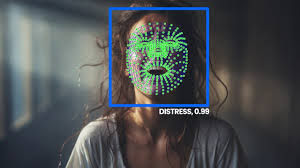
Archives
-

Missing Child Identification System using Deep Learning and Multiclass SVM
Vol. 1 No. 02 (2024)Abstract
The "Missing Child Identification System using Deep Learning and Multiclass SVM" is a groundbreaking project designed to address the pressing issue of locating and identifying missing children. Leveraging advanced technologies in the realms of deep learning and machine learning, this project aims to create a robust system for facial recognition and classification.
The deep learning component of the system utilizes state-of-the-art techniques to extract intricate facial features, generating comprehensive representations of each child. Simultaneously, a multiclass Support Vector Machine (SVM) is employed to classify and refine the identification process. The SVM acts as a classifier, distinguishing between different classes of facial features, thereby enhancing the accuracy of categorizing missing children.
The integration of deep learning and multiclass SVM in this project facilitates a more effective and efficient means of matching facial characteristics with existing databases. The result is a powerful tool that streamlines the identification process, enabling authorities to quickly and accurately reunite missing children with their families.
This project not only showcases the potential of cutting-edge technologies in addressing social issues but also underscores the significance of technology-driven solutions in humanitarian efforts. The "Missing Child Identification System" stands as a testament to the positive impact that technology can have on society, particularly in safeguarding the well-being and security of our most vulnerable population – our children.
Index terms
Missing Child Identification, Deep Learning, Multiclass SVM, Facial Recognition, Machine Learning, Social Impact, Humanitarian Technology, Child Safety, Database Matching, Technology Solutions, Vulnerable Populations, Reunification Efforts, Advanced Technologies, Facial Feature Extraction, Classifier Systems
-

A Machine Learning Framework for Cultural Speech Analysis
Vol. 2 No. 07 (2025)Abstract
This project aims to explore the realm of detection across diverse cultures using advanced speech analysis techniques. In an era of increasing globalization, understanding cultural nuances is paramount, especially in the context of communication. The project focuses on developing a robust framework that harnesses the power of speech analysis to detect anomalies, deviations, or noteworthy patterns within different cultural contexts.
The research involves the utilization of cutting-edge technology to analyze speech patterns and linguistic subtleties specific to various cultures. By integrating machine learning algorithms and cross-cultural expertise, the project aims to enhance the accuracy and adaptability of detection systems. The ultimate goal is to create a framework that can discern cultural variations in verbal expression, providing a nuanced understanding of communication styles within different societies.
Throughout the project, BTech students will delve into the intricacies of speech analysis, exploring cultural norms, linguistic variations, and contextual factors that influence communication. The interdisciplinary nature of the research involves combining computer science, linguistics, and cultural studies to create a comprehensive detection system that respects and adapts to the diversity of human expression.
This project not only contributes to the advancement of speech analysis technologies but also addresses the pressing need for culturally sensitive detection mechanisms in our interconnected world. Students will gain valuable insights into the challenges and opportunities of implementing such systems, fostering a holistic approach to technology development that respects cultural diversity.
Index Terms
Speech analysis, Cultural detection, Globalization, Communication nuances, Anomaly detection, Linguistic subtleties, Machine learning algorithms, Cross-cultural expertise, Verbal expression, Communication styles, Interdisciplinary research, Computer science, Linguistics, Cultural studies, Detection systems, Human expression, Technological advancement, culturally sensitive mechanisms, Technology development, Cultural diversity.
-

Student Dropout Prediction using DeepFM Algorithm
Vol. 2 No. 01 (2025)Abstract
This project revolves around the development and implementation of a predictive model for anticipating student dropout utilizing the innovative DeepFM algorithm. DeepFM, a fusion of deep learning and factorization machines, proves to be a potent tool for unraveling complex patterns within diverse datasets. The project aims to leverage the algorithm's capability to analyze and interpret multifaceted features such as academic performance, attendance, and socio-economic factors. Through the integration of deep neural networks and collaborative filtering, DeepFM demonstrates proficiency in discerning intricate relationships, contributing to accurate student dropout predictions. The project's primary objectives include the exploration of DeepFM's suitability for handling sparse and high-dimensional student data, as well as its potential to offer proactive insights for educational institutions to address and mitigate dropout risks. The anticipated outcome is a robust predictive model that aids educational institutions in identifying potential dropout candidates, facilitating timely interventions and support mechanisms to enhance student retention.
Index Terms
Predictive modeling, Student dropout prediction, DeepFM algorithm, Deep learning, Factorization machines, Multifaceted features, Academic performance, Attendance, Socio-economic factors, Deep neural networks, Collaborative filtering, Sparse data handling, High-dimensional data, Dropout risk mitigation, educational institutions, Timely interventions, Support mechanisms, Student retention, Data analysis, Machine learning applications.
-

Few-Shot Learning for Efficient and Accurate Crop Disease Detection in Agriculture
Vol. 2 No. 04 (2025)Abstract
Crop diseases pose a significant threat to agricultural productivity, necessitating rapid and accurate detection methods. This project explores the application of N-shot/Few-shot learning techniques for crop disease classification and detection. The conventional challenge in agricultural datasets is the scarcity of labeled examples for various disease classes. Leveraging the principles of N-shot learning, the project aims to develop a model capable of accurately identifying and categorizing crop diseases with only a limited number of labeled instances per class.
The project involves the implementation of a machine learning model that learns to generalize from a small dataset, thus overcoming the limitations of insufficient labeled samples. By adopting N-shot learning, the system becomes adept at recognizing patterns and features associated with different crop diseases, enabling it to make reliable predictions even in scenarios with sparse labeled data. The proposed solution holds promise for resource-constrained environments where obtaining extensive labeled datasets is challenging.
Through the development and evaluation of the N-shot/Few-shot learning model, this project contributes to the advancement of efficient and cost-effective crop disease detection methods. The outcomes are expected to have implications for sustainable agriculture by providing farmers with a reliable tool for early disease identification, thereby aiding in timely and targeted interventions to safeguard crop yield and quality.
Index terms
Crop diseases, Agricultural productivity, N-shot learning, Few-shot learning, Crop disease classification, Disease detection methods, labeled datasets, Machine learning models, Generalization, Pattern recognition, Feature extraction, Sparse labeled data, Resource, constrained environments, Efficient detection methods, Cost-effective solutions, Early disease identification, Timely interventions, Sustainable agriculture, Crop yield, Crop quality.
-

Empowering Community Bonds through Resources and Sharing
Vol. 1 No. 05 (2024)Abstract
The project titled "Empowering Community Bonds through Resources and Sharing" seeks to explore and implement initiatives that foster a sense of unity and collaboration within a community. The project aims to identify and establish shared resources, such as community gardens, tool libraries, or communal spaces, to facilitate the exchange of tangible resources. Additionally, it delves into the exchange of ideas, experiences, and support systems, promoting a culture of inclusivity and understanding among community members.
Through this project will investigate the impact of resource-sharing initiatives on community development, self-sufficiency, and resilience. The implementation of practical solutions, such as creating platforms for knowledge exchange and collaborative projects, will be a key focus. The project aims to contribute to the enhancement of community bonds by emphasizing the importance of collective well-being and interdependence.
By conducting research, designing and implementing community-based interventions, and evaluating the outcomes to demonstrate the positive effects of empowering community bonds through resources and sharing. The findings and recommendations from this project can serve as a valuable guide for future community development initiatives, promoting a more cohesive and resilient society.
Index terms
Community empowerment, Resource-sharing initiatives, Community development, Self-sufficiency, Resilience, Knowledge exchange platforms, Collaborative projects, Collective well-being, Interdependence, Community-based interventions, Unity and collaboration, Inclusivity, Community bonds, Shared resources, Community gardens, Tool libraries, Communal spaces, Impact evaluation, Positive effects, Future community development initiatives.
-

The Cyber-Physical Metaverse: Where Virtual Dreams Shape Real Life
Vol. 2 No. 9 (2025)For cyber-physical metaverse systems (CPMSs) to gain social legitimacy, challenges such as latency, privacy, cost, equity, and trust must be carefully addressed. Their success depends not only on technical readiness but also on societal acceptance, ethical governance, and human-centered design.
-

AI-Driven Stock Market Forecasting: Leveraging News Sentiment and NLP for Predictive Analytics
Vol. 2 No. 03 (2025)Abstract
This project delves into the innovative realm of stock price prediction by leveraging the insights derived from news articles. In an era characterized by the abundance of financial information and the rise of natural language processing techniques, the project aims to develop a predictive model that harnesses the power of textual data to forecast stock price movements.
The project involves the collection of relevant news articles from diverse sources, with a focus on financial news that could impact stock markets. Natural language processing algorithms are implemented to analyze the sentiment and content of these articles, extracting key features that may influence stock prices. The dataset is then utilized to train machine learning models, employing techniques such as sentiment analysis and time-series analysis.
The predictive model's performance is evaluated using historical stock data, measuring its accuracy in forecasting price movements against actual market outcomes. The project also explores the impact of various external factors, such as market trends, economic indicators, and geopolitical events, on the accuracy of predictions.
Through this project aims to contribute to the evolving field of financial technology by providing a comprehensive exploration of the feasibility and effectiveness of utilizing news articles for stock price prediction. The project's findings may offer valuable insights into the integration of natural language processing and machine learning techniques in financial analysis, paving the way for advancements in predictive modeling within the context of dynamic and unpredictable stock markets.
Index terms
Stock price prediction, News articles, Natural language processing (NLP), Financial information, Machine learning models, Sentiment analysis, Time-series analysis, Historical stock data, Market trends, Economic indicators, Geopolitical events, Financialtechnology (FinTech), Predictive modeling, Financial analysis, Integration of NLP and machine learning, Dynamic stock markets.
-

MULTIMODEL EMOTION DETECTION IN VIDEOS USING PRE-TRAINED LLMS
Vol. 1 No. 1 (2024)Abstract
This paper presents a comprehensive system designed to detect emotions in videos using pre-trained Large Language Models (LLMs). The system integrates video processing and natural language processing techniques to analyze both visual and audio data, providing a robust solution for emotion detection. This paper details the system architecture, implementation, testing methodologies, and the tangible benefits observed during initial deployments.
Index Terms
Emotion Detection, Multimodal Analysis, Pre-trained LLMs, Video Processing, Natural Language Processing
-

A Comprehensive Defense Model Against DoS and DDoS Attacks
Vol. 2 No. 06 (2025)Abstract
This project explores the development and implementation of a mitigation strategy against Dos and DDoS attacks using a hybrid model.
The project aims to analyze the intricacies of Dos and DDoS attacks, focusing on the hybrid model that combines both volumetric and application layer attack vectors. The research involves studying existing attack methodologies and understanding their impact on network infrastructure and application functionalities. Through this analysis, the project seeks to design and implement a comprehensive defense mechanism that addresses the challenges posed by hybrid Dos and DDoS attacks.
Key objectives of the project include:
Investigating various Dos and DDoS attack vectors and their implications on network security.
Designing a hybrid model that integrates countermeasures against volumetric and application layer attacks.
Developing and implementing a prototype system to demonstrate the effectiveness of the proposed hybrid defense mechanism.
Evaluating the performance of the hybrid model under simulated attack scenarios and real-world conditions.
The outcomes of this project are expected to contribute to the enhancement of network security measures, providing a more resilient defense against evolving Dos and DDoS threats. This research aligns with the broader goal of fortifying network infrastructures to ensure the availability and reliability of critical online services in the face of sophisticated cyber-attacks.
-

Empowering Community Bonds through Resources and Sharing
Vol. 1 No. 03 (2024)Abstract
The project titled "Empowering Community Bonds through Resources and Sharing" seeks to explore and implement initiatives that foster a sense of unity and collaboration within a community. The project aims to identify and establish shared resources, such as community gardens, tool libraries, or communal spaces, to facilitate the exchange of tangible resources. Additionally, it delves into the exchange of ideas, experiences, and support systems, promoting a culture of inclusivity and understanding among community members.
Through this project will investigate the impact of resource-sharing initiatives on community development, self-sufficiency, and resilience. The implementation of practical solutions, such as creating platforms for knowledge exchange and collaborative projects, will be a key focus. The project aims to contribute to the enhancement of community bonds by emphasizing the importance of collective well-being and interdependence.
By conducting research, designing and implementing community-based interventions, and evaluating the outcomes to demonstrate the positive effects of empowering community bonds through resources and sharing. The findings and recommendations from this project can serve as a valuable guide for future community development initiatives, promoting a more cohesive and resilient society.
Index terms
Community empowerment, Resource-sharing initiatives, Community development, Self-sufficiency, Resilience, Knowledge exchange platforms, Collaborative projects, Collective well-being, Interdependence, Community-based interventions, Unity and collaboration, Inclusivity, Community bonds, Shared resources, Community gardens, Tool libraries, Communal spaces, Impact evaluation, Positive effects, Future community development initiatives.
-

Air Quality Prediction Using Machine Learning Algorithms
Vol. 2 No. 08 (2025)ABSTRACT
The project titled "Air Quality Prediction Using Machine Learning Algorithms" endeavors to address the critical issue of air pollution through the application of advanced computational techniques. The project aims to develop a robust predictive model that can forecast air quality levels based on historical data, meteorological parameters, and relevant environmental features. Leveraging machine learning algorithms such as regression, decision trees, or neural networks, the project seeks to analyze complex relationships within the data and enhance the accuracy of air quality predictions.
The methodology involves the collection and preprocessing of extensive datasets encompassing pollutant concentrations, weather conditions, and geographical information. The selected machine learning algorithms will be trained on this data to recognize patterns and correlations, enabling the model to make accurate predictions. The project also explores the integration of real-time data streams, satellite imagery, and sensor networks to improve the responsiveness of the predictive model.
-

Smart Hospital Management with REACT: A User-Centric Approach
Vol. 2 No. 01 (2025)Abstract
The project titled "Hospital Management using REACT" aims to develop a comprehensive and user-friendly web application for efficient management of hospital resources and operations. Leveraging the power of REACT technology, the project focuses on creating a responsive and interactive interface that facilitates seamless navigation and accessibility across various devices.
The system will incorporate modules to handle key aspects of hospital management, including patient information, staff scheduling, and medical equipment inventory. Through the use of REACT components, the application will enable the creation of dynamic dashboards, real-time data visualization, and personalized interfaces tailored to different user roles within the hospital hierarchy.
Key features of the proposed system include responsive design, ensuring optimal user experience on desktops, tablets, and smartphones. The state-of-the-art REACT state management will be utilized to handle complex data interactions, ensuring the accuracy and real-time updating of information.
The project aims to address the challenges faced by hospital administrators in managing resources effectively, providing them with a powerful tool to streamline workflows and enhance decision-making. By adopting REACT in the development process, the project seeks to deliver a scalable, modular, and maintainable solution for hospital management that aligns with modern web development practices.
Through this projectaims to showcase proficiency in web development, UI/UX design, and the utilization of cutting-edge technologies like REACT to solve real-world challenges in the healthcare sector. The resulting web application is anticipated to contribute to the improvement of hospital administration processes, ultimately benefiting both healthcare providers and patients.
Index Terms
Hospital Management, REACT Technology, Web Application, User Interface Design, Responsive Design, User Experience, Patient Information Management, Staff Scheduling, Medical Equipment Inventory, Dashboard, Data Visualization, User Roles, State Management, Workflow Streamlining, Decision-making Enhancement, Scalability, Modularity, Web Development, UI/UX Design, Healthcare Sector.
-

Smart City App for Citizen Complaint Management
Vol. 2 No. 05 (2025)Abstract
The project titled "Smart City App for Citizen Complaint Management" aims to develop a comprehensive mobile application to streamline and enhance the process of citizen complaint resolution within urban environments. The project focuses on creating a user-friendly interface that enables citizens to easily report issues such as potholes, streetlight outages, and other civic concerns.
Key features of the app include a simple and intuitive complaint submission system, allowing users to provide detailed information about the nature of the problem. The application assigns a unique reference number to each complaint, facilitating efficient tracking and monitoring by municipal authorities.
The project also emphasizes the integration of a centralized dashboard for municipal officials, enabling them to prioritize and manage complaints effectively. The app incorporates automation to categorize and prioritize complaints based on urgency and severity, optimizing resource allocation for timely issue resolution.
Transparency is a key aspect of the Smart City app, with real-time updates and notifications keeping citizens informed about the status and progress of their submitted complaints. Users are encouraged to provide feedback on the resolution process, promoting continuous improvement in municipal services.
By addressing the challenges of citizen complaint management, the project contributes to the development of smarter and more responsive urban environments. The Smart City app aims to foster a collaborative relationship between citizens and municipal authorities, ultimately leading to a more efficient and engaged community.
Index Terms
Smart city, Citizen complaint management, Mobile application, Urban environments, Potholes, Streetlight outages, Civic concerns, User-friendly interface, Complaint submission system, Municipal authorities, Centralized dashboard, Automation, Issue resolution, Transparency, Real-time updates, Notifications, Feedback, Municipal services, Collaborative relationship, Community engagement.
-

Real-Time Facial Analytics: A Deep Learning Approach to Gender, Age, and Emotion Recognition
Vol. 2 No. 06 (2025)Abstract
This project aims to develop a sophisticated real-time face recognition system capable of extracting comprehensive insights such as gender, age, and emotion, while incorporating statistical analysis. The project leverages advanced deep learning architectures, including Convolutional Neural Networks (CNN), Support Vector Machines (SVM), and Long Short-Term Memory (LSTM) networks, to achieve a multi-dimensional understanding of facial attributes.
The Convolutional Neural Network is employed for its effectiveness in spatial feature extraction, enhancing the accuracy of gender and age estimation. Support Vector Machines contribute to refining classification boundaries, augmenting the overall precision of the recognition system. The inclusion of Long Short-Term Memory networks enables the model to capture temporal dependencies, facilitating nuanced emotion analysis in real-time scenarios.
Additionally, the project incorporates statistical methods to provide valuable insights into the distribution and variability of demographic attributes and emotional states within the dataset. The holistic integration of these diverse approaches ensures a robust and efficient real-time face recognition system capable of delivering accurate and nuanced results across multiple dimensions. This project not only contributes to the advancement of facial recognition technology but also offers a valuable learning experience in the realm of deep learning and computer vision.
Keywords
Real-time face recognition, Gender estimation, Age estimation, Emotion analysis, Statistical analysis, Deep learning architectures, Convolutional Neural Networks (CNN), Support Vector Machines (SVM), Long Short-Term Memory (LSTM) networks, Spatial feature extraction, Temporal dependencies, Demographic attributes, Emotional states, Dataset analysis, Robust recognition system, Computer vision, Deep learning, Facial attributes, multi-dimensional understanding, Nuanced results.
-

Satellite Image Classification using Inverse Reinforcement Learning and Convolutional Neural Networks
Vol. 1 No. 05 (2024)Abstract
Satellite image classification plays a pivotal role in various fields such as agriculture, urban planning, and environmental monitoring. This project proposes a novel approach to satellite image classification by integrating Inverse Reinforcement Learning (IRL) with Convolutional Neural Networks (CNN). The methodology involves training the model to understand complex spatial patterns and features inherent in satellite imagery through the extraction of relevant features using CNNs.
In the proposed framework, the model learns from expert demonstrations, mimicking the decision-making process of human experts in order to infer the underlying reward structure guiding their actions. This application of IRL allows the model to generalize and make informed predictions on unseen satellite data, contributing to enhanced classification accuracy.
The project aims to compare the results obtained from the IRL-based CNN approach with the accuracy achieved by traditional satellite image classification algorithms. Commonly used algorithms such as Support Vector Machines (SVM), Random Forests, and conventional CNNs trained with supervised learning will be considered for comparison. The evaluation will be based on metrics such as precision, recall, and F1 score, providing a comprehensive analysis of the proposed methodology's effectiveness.
The findings from this project are expected to shed light on the potential advantages and improvements offered by integrating inverse reinforcement learning techniques with CNNs in the context of satellite image classification. This research contributes to the growing field of remote sensing and machine learning applications, offering valuable insights for future developments in satellite image analysis.
Index Terms
Satellite image classification, Inverse Reinforcement Learning (IRL), Convolutional Neural Networks (CNN), Spatial patterns, Feature extraction, Expert demonstrations, Decision-making process, Reward structure, Generalization, Prediction, Classification accuracy, Support Vector Machines (SVM), Random Forests, Supervised learning, Evaluation metrics, Precision, Recall, F1 score, Remote sensing, Machine learning applications.
-

Shaping the Ultra-Connected Future: The Road to 6G
Vol. 2 No. 09 (2025)Talk of “6G” is no longer an engineering thought experiment: it’s becoming a social and economic conversation. Vendors and standards bodies describe 6G as the platform that will move us from connected devices to connected intelligence and immersive experiences; governments are already funding research and patent drives; and citizens are thinking about towers, costs and health implications. This article surveys current views on 6G from industry white papers, policy bodies and early public reactions. It explains the potential benefits (new services, resilience, socio-economic uplift), explores the main cost levers (spectrum, densification, energy), and outlines social and governance challenges (acceptance, equity, environmental impact). The aim is to give a balanced, readable synthesis of what people think, what’s at stake, and how societies might prepare for the ultra-connected infrastructures 6G promises.
-

Organ Donation Coordination Platform
Vol. 2 No. 03 (2025)Abstract
The project titled "Organ Donation Coordination Platform" aims to address the challenges associated with organ donation and transplantation processes by developing a comprehensive and efficient digital platform. The project focuses on creating a user-friendly interface that facilitates seamless communication and coordination among healthcare professionals, potential donors, and transplant recipients.
The key objectives include the development of a centralized database to store donor and recipient information securely, implementation of advanced algorithms for quick and accurate compatibility matching, and the incorporation of technologies to streamline logistics and reduce delays in organ allocation. The platform will prioritize confidentiality and transparency, ensuring the secure exchange of medical information while adhering to ethical standards.
Through the utilization of emerging technologies and innovative solutions, the project aims to enhance the overall efficiency of the organ donation process. This includes features for initial donor evaluation, real-time updates on organ availability, and post-transplant monitoring. The platform ultimately seeks to contribute to the advancement of organ donation and transplantation, fostering collaboration and accessibility within the healthcare ecosystem.
Index Terms
Organ Donation, Transplantation Processes, Digital Platform, Healthcare Professionals, Coordination, User-Friendly Interface, Centralized Database, Compatibility Matching, Logistics Streamlining, Organ Allocation, Confidentiality, Transparency, Medical, Information Exchange, Emerging Technologies, Innovative Solutions, Donor Evaluation, Real-Time Updates, Post-Transplant Monitoring, Collaboration, Accessibility, Healthcare Ecosystem.
-

HYBRID MACHINE LEARNING MODEL FOR EFFICIENT BOTNET ATTACK DETECTION IN IOT ENVIRONMENT
Vol. 1 No. 1 (2024)Abstract
The advent of machine learning has significantly transformed various sectors, introducing advanced predictive capabilities and intelligent systems. This paper presents a hybrid machine learning model combining Federated Learning (FL) and Explainable Artificial Intelligence (XAI). Federated Learning enhances privacy and security by allowing data to be trained across multiple decentralized devices without centralizing the data, while XAI provides interpretability and transparency to the model's decisions. Our proposed model leverages these technologies to ensure robust, secure, and understandable machine learning outcomes. The effectiveness of this hybrid model is demonstrated through extensive experiments, showing improved accuracy and interpretability without compromising user data privacy.Furthermore, the model addresses the growing concerns around data breaches and the lack of transparency in AI decision-making processes. By implementing Federated Learning, data remains localized on user devices, reducing the risk of exposure during data transfer. The integration of XAI techniques ensures that users and stakeholders can comprehend the rationale behind model predictions, fostering trust and compliance with regulatory standards. This combination is particularly beneficial for applications in sensitive areas such as healthcare, finance, and autonomous systems, where both data privacy and model transparency are paramount.
Index Terms
Hybrid Machine Learning, Federated Learning, Explainable AI (XAI), Data Privacy, Model Interpretability, Decentralized Training, Machine Learning Security, Transparent AI, Data Security, User Trust, AI in Healthcare, AI in Finance, AI Governance, SHAP, LIME, Model Transparency.
-

Advanced Computer Vision Model for Real-Time Traffic Sign Classification in Autonomous Vehicles
Vol. 1 No. 04 (2024)This project titled "Advanced Computer Vision Model for Aiding Automobiles in Traffic Sign Classification" addresses the imperative need for enhancing road safety and driving efficiency through the application of cutting-edge technologies. The project focuses on developing a sophisticated computer vision model equipped with advanced algorithms and deep learning techniques. This model aims to accurately identify and classify various traffic signs encountered by vehicles in real-time.
The proposed solution leverages state-of-the-art technologies, including convolutional neural networks (CNNs) and advanced image recognition techniques, to enable swift and accurate analysis of visual data captured by on-board cameras. The system exhibits adaptability to diverse environmental conditions and lighting scenarios, ensuring robust performance under varying circumstances.
The primary objective of the project is to contribute to road safety by providing an intelligent system capable of recognizing a wide range of traffic signs, including regulatory, warning, and information signs. Through continuous learning and refinement, the computer vision model evolves to optimize its classification accuracy, contributing to a safer and more efficient driving experience.
This project not only serves as a practical application of computer vision principles but also aligns with the broader goals of advancing technology for societal benefit. The outcomes of this research aim to pave the way for the integration of intelligent systems into automobiles, thereby making significant strides towards creating a safer and smarter transportation ecosystem.
-

Empowering Architecture through Human-AI Co-Creation
Vol. 2 No. 08 (2025)Abstract
This project explores the innovative realm of "User-Driven Generative AI Architectural Design." In this endeavor, the focus is on developing an interactive and user-centric architectural design system powered by generative artificial intelligence (AI). The project aims to empower users with the ability to actively shape and influence the architectural design process through intuitive interfaces and input mechanisms.
The proposed system leverages cutting-edge machine learning algorithms to understand user preferences, constraints, and creative inputs. Through iterative feedback loops, the generative AI adapts and refines its output, ensuring a personalized and evolving design experience for each user. The goal is to establish a symbiotic relationship between human creativity and AI capabilities, fostering a collaborative environment where users actively contribute to the generation and refinement of architectural designs.
Key aspects of the project include the development of an intuitive user interface, the integration of advanced generative AI algorithms, and the implementation of a learning mechanism to enhance the system's responsiveness to user input. The outcome of this project holds the potential to revolutionize architectural design processes, offering a dynamic and user-driven approach to generate innovative and personalized architectural solutions.
Index terms
User-Driven Design, Generative AI, Architectural Design, Interactive Interfaces, Machine Learning Algorithms, User Preferences, Creative Inputs, Feedback Loops, Personalization, Collaborative Design, User Interface Development, Advanced AI Algorithms, Learning Mechanisms, Responsive Systems, Innovative Solutions, Revolutionizing Design Processes.
-

Advanced Threat Detection: Enhancing Weapon Identification and Facial Recognition with YOLOv8
Vol. 2 No. 02 (2025)Abstract:
The provided implementation code integrates several computer vision and machine learning techniques to detect and analyze the presence of persons and weapons in an image, utilizing pose estimation to further assess the relationship between detected persons and objects. It employs convolutional neural networks (CNNs), specifically a custom model for person detection and YOLO (You Only Look Once) for weapon detection. The pose estimation is performed using the Media Pipe library, which helps in identifying human poses by locating key points on the person's figure depicted in the image.The process initiates by loading the necessary models and preparing the image for detection tasks. Persons in the image are identified using a custom CNN model that processes images pre-processed to highlight facial features, while weapon detection is handled by YOLO, which scans for items classified as weapons. Following the detection, the application determines the spatial relationship between detected weapons and persons by analyzing key points from the pose estimation to see if a person is holding a weapon.
Keywords- computer vision, machine learning, pose estimation, object detection, CNN, YOLO, MediaPipe, facial recognition, weapon detection, image processing, security applications, real-time analysis, convolutional neural networks, keypoints detection.
-

ParkCam – Smart Vision-Based Parking Management
Vol. 2 No. 05 (2025)Abstract
The "Smart Parking System using Computer Vision" project aims to revolutionize traditional parking management by incorporating advanced computer vision technology. This project focuses on the development of a system that utilizes real-time video feeds from cameras installed in parking areas. The project employs sophisticated image processing algorithms to detect and track vehicles, accurately identifying available parking spaces.
Through the integration of computer vision, the system distinguishes between occupied and vacant parking spots, providing users with instant updates on parking availability. The project also incorporates machine learning algorithms to enhance accuracy and adaptability, allowing the system to learn from patterns and optimize its performance in different parking scenarios.
The user interface, accessible through a mobile application or web platform, provides real-time information on parking availability and guides users to the nearest vacant spot. This project not only streamlines the parking experience for users but also contributes to efficient traffic flow and reduced congestion in parking areas. The "Smart Parking System using Computer Vision" project showcases the potential of cutting-edge technology in addressing urban mobility challenges and enhancing the overall parking management landscape.
Index terms
Smart Parking System, Computer Vision, Real-time Video Feeds, Image Processing Algorithms, Vehicle Detection, Parking Space Tracking, Occupied and Vacant Parking Spots, Machine Learning Algorithms, User Interface, Mobile Application, Web Platform, Parking Availability, Traffic Flow, Congestion Reduction, Urban Mobility, Parking Management, Technology Integration, Efficiency Optimization.
-

Air Pollution Monitoring Using Machine Learning for Environmental Sustainability
Vol. 1 No. 02 (2024)Abstract
Air pollution is a critical environmental issue with significant implications for public health and the well-being of ecosystems. This project focuses on developing an innovative solution for air pollution monitoring utilizing machine learning (ML) techniques. The primary objective is to design a system that can accurately predict, analyze, and monitor air quality in real-time, providing valuable insights for effective pollution control and management.
The proposed system incorporates a network of sensors strategically placed in various locations to capture diverse air quality parameters such as particulate matter, nitrogen dioxide, sulfur dioxide, and more. The collected data is then processed through ML algorithms to identify patterns, correlations, and trends, enabling the system to make accurate predictions about air quality levels.
The project aims to address the limitations of traditional monitoring systems by
leveraging the adaptability and self-learning capabilities of ML models. By continuously updating and refining the models based on incoming data, the system becomes more adept at providing precise and timely information on air quality fluctuations.
This endeavor not only contributes to a deeper understanding of local air pollution dynamics but also empowers decision-makers with actionable insights for implementing targeted interventions. The integration of ML in air pollution monitoring represents a significant step towards creating sustainable and data-driven strategies for mitigating the adverse effects of pollution on human health and the environment.
Index terms
Air pollution, Machine Learning, Environmental Monitoring, Sustainability, Predictive Modeling, Sensor Network, Data Analysis.
-

OCR-Aided NLP for Automated Document Summarization
Vol. 2 No. 07 (2025)Abstract
The project titled "Automated Text Summarization from Scanned Documents" aims to develop a system that streamlines the process of extracting key information from scanned documents and generating concise textual summaries. The primary focus is on leveraging Optical Character Recognition (OCR) technology to convert scanned images into machine-readable text, followed by the application of Natural Language Processing (NLP) techniques for effective summarization.
The project involves the design and implementation of an intelligent algorithm that identifies important sentences, extracts key phrases, and summarizes the main ideas present in the scanned documents. Advanced NLP models and neural networks will be explored to enhance the accuracy and efficiency of the summarization process. The system's objective is to provide a time-efficient and accurate means of distilling relevant content from large volumes of scanned documents, thereby facilitating improved accessibility and aiding in efficient document management.
The proposed solution has significant potential applications in various domains such as information retrieval, document categorization, and knowledge management. The successful implementation of this project will contribute to the advancement of automated summarization techniques, offering a valuable tool for individuals and organizations dealing with vast amounts of scanned textual data.
Index Terms
Automated Text Summarization, Scanned Documents, Optical Character Recognition (OCR), Natural Language Processing (NLP), Key Information Extraction, Machine-Readable Text, Intelligent Algorithms, Sentence Identification, Key Phrase Extraction, Neural Networks, NLP Models, Document Summarization, Information Retrieval, Document Categorization, Knowledge Management, Accessibility, Document Management, Automated Summarization Techniques.
-

Sign Language Recognition System integrated with a mobile application
Vol. 1 No. 05 (2024)Abstract
This project aims to develop an innovative Sign Language Recognition System integrated with a mobile application, utilizing state-of-the-art machine learning techniques. The project addresses the communication challenges faced by individuals with hearing impairments by providing a real-time, efficient, and user-friendly solution for sign language interpretation.
The proposed system leverages a comprehensive dataset for training a machine learning model, enabling it to accurately recognize a diverse range of sign language gestures. The mobile application acts as a seamless interface, allowing users to communicate through sign language effortlessly. The system's integration with a mobile platform enhances accessibility, enabling users to engage in conversations, access information, and participate in various daily activities.
Key features of the project include real-time gesture recognition, continuous learning and updating of the machine learning model for improved accuracy, and a user-friendly interface for both sign language users and those interacting with them. The successful implementation of this Sign Language Recognition System is expected to contribute significantly to fostering inclusivity and accessibility for individuals with hearing impairments.
Index Terms
Sign language recognition, Machine learning techniques, Mobile applications, Communication challenges, Hearing impairments, Real-time gesture recognition, Dataset, Accessibility, Inclusivity, Continuous learning, User-friendly interface, Integration, Mobile platform, Daily activities, Improved accuracy.




